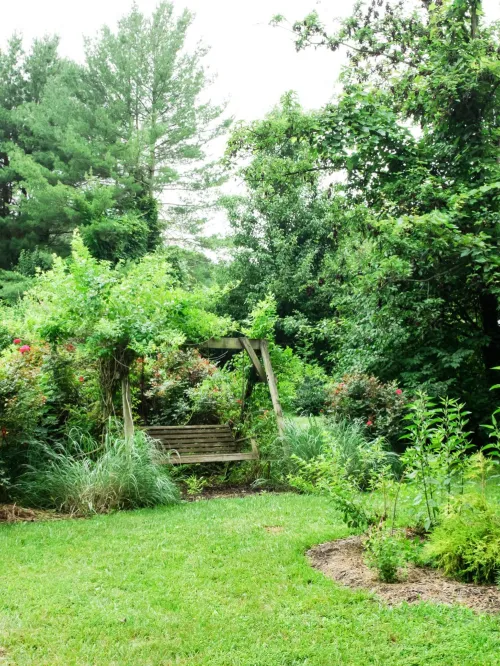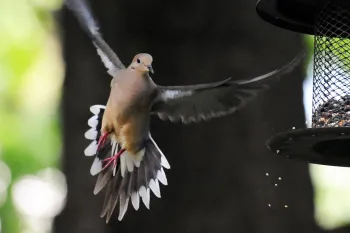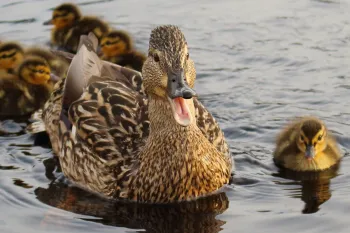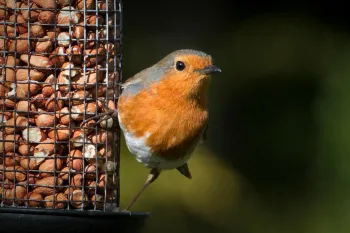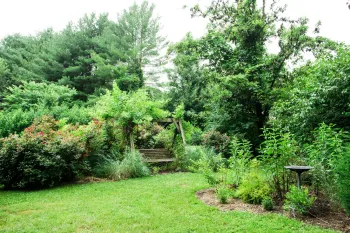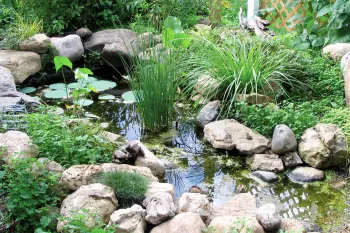What is a humane backyard?
A humane backyard is a natural habitat with plenty of food, water and cover. It doesn’t have to be a backyard. It can be a community park, corporate property, place of worship or even an apartment balcony. Imagine how much more wildlife-friendly habitat would exist if everyone tried to help!
of the world's flowering plants are pollinated by animals (mostly bees)
of the U.S. water supply is used outdoors, mostly for lawns
of North American bird species rely on insects to feed their young
People around the world are opting to replace conventional turf grass with plants that support wildlife. They’re setting out bird baths and feeders, and saying “no” to pesticides. They’re welcoming rabbits, birds, squirrels, bees, butterflies and so many more species onto their land. They know that a backyard habitat doesn’t just benefit the animals; it’s also healthier for the environment, supporting a robust ecosystem free of toxins and saving water by not maintaining a perfectly manicured lawn. And it benefits people too, by connecting us with our wild neighbors and reminding us that the decisions we make every day can have powerful consequences on the world around us.
Cultivating a humane backyard can be as simple as reducing your turf grass lawn, instead letting a variety of native plants flourish—and enjoying all the fauna who use them for food, nesting materials and shelter. Simple adjustments to yard maintenance can help create a welcoming environment. Let fallen leaves remain beneath shrubs, trees and perennials to create winter refuge for amphibians and insects and then return nutrients to the soil. Resist the urge to prune plants to the ground: Hollow stalks and stems harbor chrysalises and bee larvae, ensuring you’ll have plenty of insect visitors in the spring.
Articles and stories
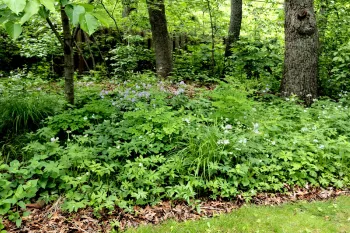
Heather Holm
By transitioning your yard from grass to viable habitat, you can help wild animals come in for a soft landing.

Ashley Barron
We can all prevent supposedly animal-friendly landscaping methods from backfiring through careful product selection and monitoring. Here are a few tips.
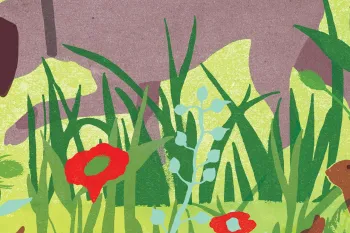
David Pohl
As it turns out, just beneath the surface of our leaf piles, decaying perennial stalks, grasses and patches of soil are many more species who have no voice to signal their presence. By bringing a reverent approach to your patch of earth this spring, you can save lives.
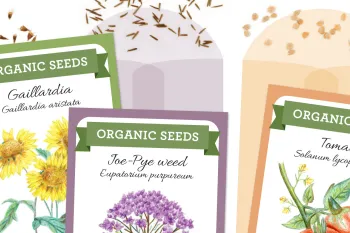
Rebecca Hallenbeck/The HSUS
Homegrown gardens can help prevent pollinator poisonings. Here are a few tips for success.
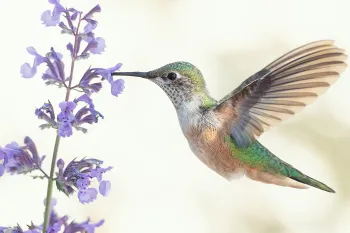
nkbimages/iStock.com
Whether you have a patio, balcony or rooftop, you can create pocket habitats by thinking from other species' perspectives. Here's how.
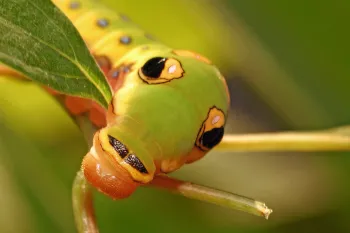
Darlyne A. Murawski, National Geographic Image Collection/Alamy Stock Photo
By catering to caterpillars, you can create a butterfly garden.
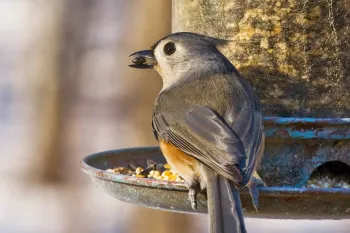
piluhin/Alamy Stock Photo
What you don't know can hurt birds. Planting bird food is a natural alternative to purchasing sunflower seed and other commercial crops where lethal wildlife control has sometimes been used to protect harvests.
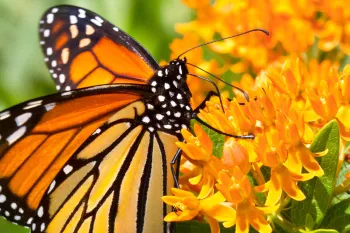
Lynn Stone/AnimalsAnimals
By choosing native plants, you can help put your garden to work for wildlife.

Eileen M. Stark
Even if you're part of a homeowner association, a wildlife-friendly garden is possible.
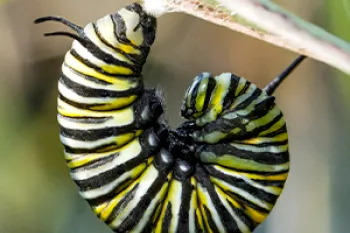
Radius Images/Alamy Stock Photo
Making space for nature takes courage—here's how to start.

Meredith Lee/The HSUS
Research reveals that even when people want to garden ecologically, the desire to match the Jones' sterile turfgrass is a more powerful draw. Here's how to garden for wildlife without upsetting your neighbors.

William Leaman/Alamy Stock Photo
Decaying logs and miniature bogs, hollowed stalks and piled rocks, nutritious pollen and leaves fallen: They're not the stuff of traditional nursery rhymes and baby showers. But if wild mothers-to-be had gift registries, these natural supplies would top the list.
All Canada Photos/Alamy
Your wild neighbors
There are innovative and effective approaches you can take to solve any wild animal problems you encounter in your home, yard or garden.
Your gift can do so much for animals in need.
Start saving lives by making a one-time gift today. Or help animals all year long with a monthly contribution.
Jean Chung/For Humane World for Animals
